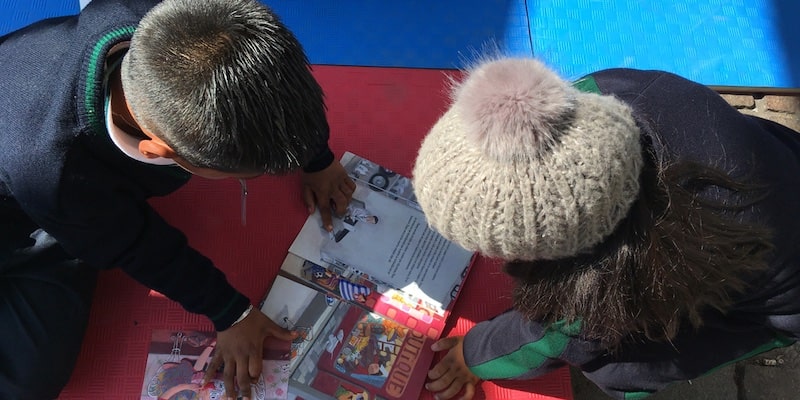We explain what literacy is and what types exist. In addition, we tell you which are the most and least literate countries.

What is literacy?
Literacy It is the process through which a person learns to read and write. It is one of the great educational milestones in an individual's life, whether it occurs during childhood or adulthood. This is also the name given to the demographic indicator that expresses the number of individuals in a country who know how to read and write.
Learning to read and write is a fundamental step in people's regular educational and training process, since reading and writing It is the basic tool for the acquisition of other knowledge. In fact, since classical antiquity, the importance of the written letter for the accumulation and transmission of knowledge, as well as for organized commerce, the dissemination of religion and the announcement of laws, has been known.
The opposite of literacy, on the other hand, is illiteracy. It is a phenomenon that exists in different degrees: there are people who read with difficulty, others who know how to read but do not write, and others who know how to read and write but are unable to access a deep language. This is because reading and writing is not a natural human ability, but rather a technique that has to be taught.
Since the Modern Age, literacy efforts have been massive, given that It is considered a fundamental human right and an indispensable ability for modern industrial work. There are numerous methods and procedures for literacy, and international entities such as UNESCO and the World Bank are responsible for recording the level of literacy in different countries.
Importance of literacy
The importance of literacy is enormous in the contemporary world. Firstly, because it implies basic knowledge that allows access to many other scientific, technical and humanistic knowledge as well as the production and transmission of one's own ideas. And secondly, because it turns out essential for the correct relationship with society and its institutions.
Thus, people who do not know how to read or write are excluded from numerous civic, social and political practices, and suffer from a great state of vulnerability: they cannot read what is established in a contract, they do not have access to the written press and production. editorial, nor to contemporary communication and information technologies.
On the other hand, the acquisition of literacy It also involves the acquisition of valuable linguistic, cognitive and cultural capabilities which contribute to the formation of more lucid, critical and active individuals.
Types of literacy
There are different types of literacy, depending on the degree of mastery of verbal language, and even the way in which this knowledge is understood.
- Full literacy. It refers to the perfect management of reading and writing, to the point of understanding and elaborating complex messages and accessing deep knowledge and novel experiences through writing.
- Functional literacy. It refers to sufficient literacy skills to survive in modern society, although not to decipher and prepare complex texts and acquire demanding knowledge.
- Illiteracy. It refers to the inability to handle literacy, that is, not knowing how to read or write.
On the other hand, one can speak of literacy in different specialized areas of contemporary life, that is, of the acquisition of basic knowledge fundamental to autonomously and responsibly exercising certain knowledge. For example:
- Digital literacy. It refers to learning the basic precepts of computing and the use of computer systems, such as smart cell phones, applications and the Internet.
- Audiovisual literacy. It refers to the learning of the basic notions of audiovisual language, that is, the ability to reflexively interpret visual or audiovisual content, such as films, photographs, paintings, among others.
More and less literate countries
Literacy It occurs unevenly between countries, depending on whether they are high, middle and low income. The geographical regions with the lowest literacy rate in the world are, according to UNESCO (2018), the Middle East (58.6% of people who know how to read and write) and sub-Saharan Africa (59.7%). The nations with the smallest literacy margin in the world are Niger, Chad and South Sudan, whose literate population is between 19 and 27% of the total.
On the contrary, First world countries have literacy margins that are around 100%. Among them, China is the power with the lowest rate (96.4% of its citizens literate) and Russia, on the other hand, has the highest rate (99.7% of its citizens literate).
When it comes to the Hispanic world, Spain is the country with the highest literacy, while in Latin America the figure can vary between 81.5% and 99.8% of the population of each country.
Continue with: Educational model
References
- World Bank. (sf). “Literacy rate, total adults (% of people aged 15 and over).” https://datos.bancomundial.org/
- National Literacy Trust. (sf). “What is Literacy?” https://literacytrust.org.uk/
- The Encyclopaedia Britannica. (sf). “Literacy”. https://www.britannica.com/
- UNESCO. (2022). “What you should know about literacy.” https://www.unesco.org/





